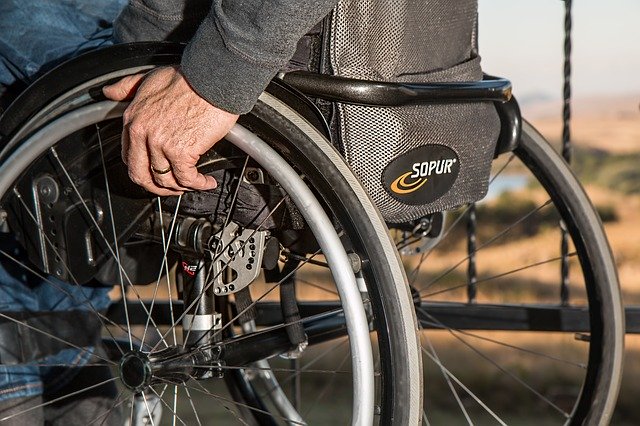People who have some physical disability often find it very hard to perform simple tasks like walking or standing.
Image by Steve Buissinne from Pixabay
For them, the mobility issue is a major concern. They are at a loss on how they can move around. Luckily, several assistive mobility devices for the disabled are available in the market that can help them regain some of their lost mobility. They can once again lead a life on their own, depending on the extent of the disability.
Also known as Ambulation devices, mobility aids can provide a new life to people with disabilities. Those who use assistive technology can even make an impaired athlete take part in competitions once again. A typical example is the famous South African professional sprinter Oscar Pistorius, born with deformed feet, and his legs had to be amputated from below the knee. Despite the infirmity that would have left others in a wheelchair, he participated in both the Olympic Games and Paralympic Games with the help of prosthetic legs only to become a Paralympic champion.
Characteristics of physical disability and mobility impairments
- Mobility impairment is the result of a deficiency in motor function, including fine motor function and locomotor and non-locomotor functions.
- It can also include deficiency in social, and physical disability can even impact cognitive and adaptive behavioral skills that can impair vision, language, hearing, or other sensory areas.
- It is common for physically disabled people to experience muscle stiffness and loss of muscle strength, leading to spasticity.
- Physical disability can inhibit the range of motion that prevents movement besides perceptual or cognitive impairment.
- People with such physical disabilities may require medical treatment, and some may have to remain confined to the bed to ensure prolonged bed rest that might improve the condition in the long run.
- Such people might also experience neuromuscular and musculoskeletal impairments.
Assistive technology for the care and home comfort
The advancement of technology has opened new vistas for disabled people who can now reduce or eliminate others’ dependence to maintain their movements and mobility and enjoy independent living. Assistive technology devices are making rapid strides, and something that people could not think about a few years ago is now available. Some of the devices that were clumsy and or prohibitively expensive now not only affordable but also much more efficient and comfortable, which suits a variety of needs of the disabled population. For example, Stair Lifts are cost-effective alternatives to elevators and easy to install so that users can travel up and down the stairs while remaining seated.
Assistive technology is making life easy for people with physical disabilities by offering them some alternative input method that helps them control electronic home appliances like lights, fans, heaters, air conditioners, Electric Hospital Beds for Home Care, and electronically controlled doors. It is a great relief for the physically disabled persons who can once again enjoy independent living to some extent. Smart Home assistants like Amazon Echo or Google Assistant empower physically disabled people by allowing them to use a phone or computer all by themselves.